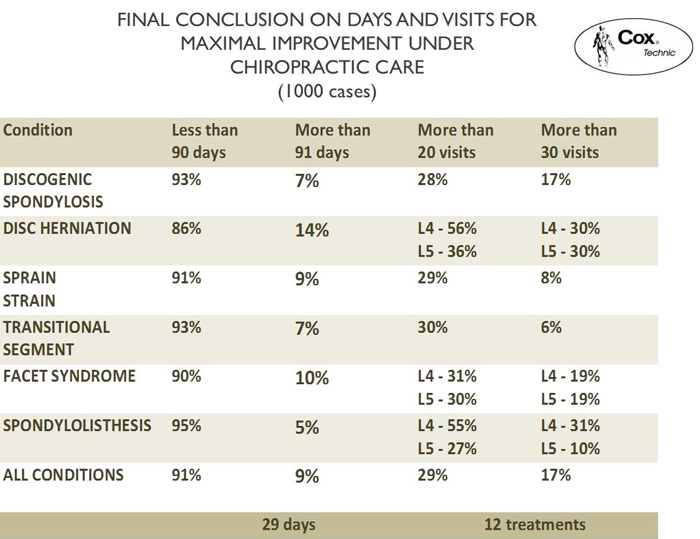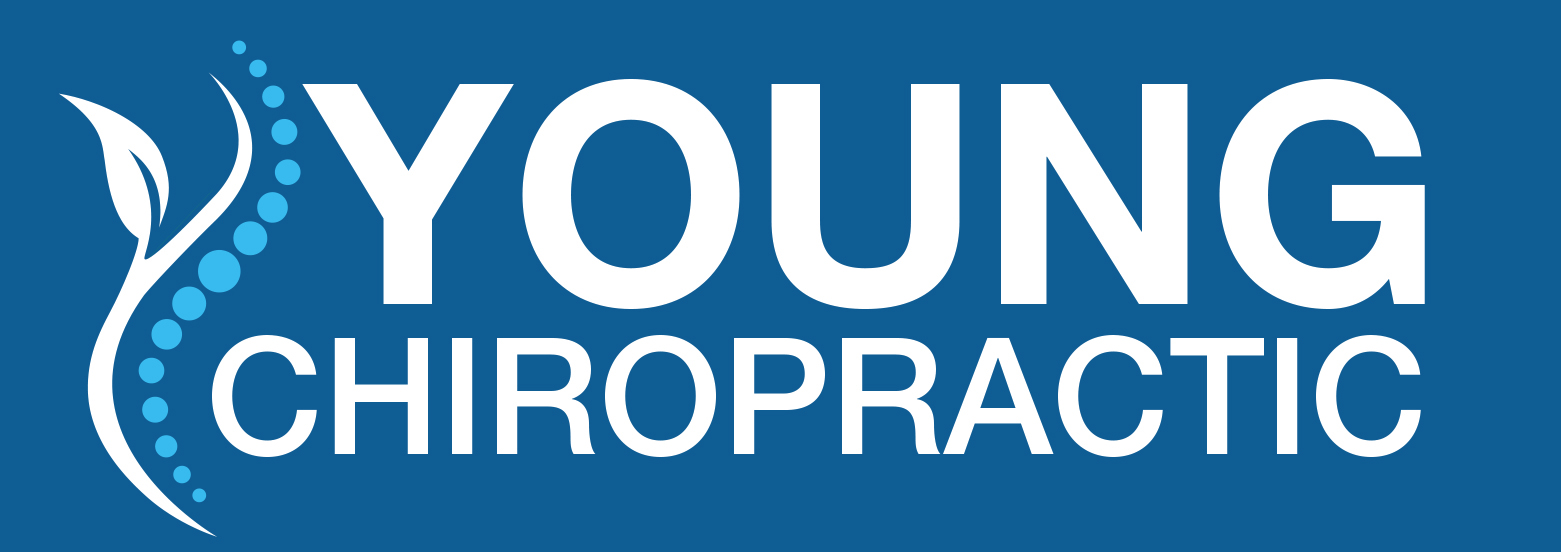About Easley Low Back Pain
chiropractic FOR LOW BACK PAIN
chiropractic Cox Technic Flexion Distraction and Decompression spine manipulation gives positive outcomes and is supported by the literature on back care. chiropractic spinal manipulation is a standard of care for low back pain and leg pain. Its benefits are extensively documented in the literature, and research literature citations are pointed out here.
Low Back Pain
Any dialog of low back pain must start with a description of what low back pain entails for you, the patient. It may be one or more of the following symptoms:
Every one of of these details are paired with low back pain and are but kinds of what is normally referred to as low back pain. It can be stated precisely that the further the pain spreads down the lower extremity, the more serious the spine problem is, and the more difficult it is to relieve. The reason being that with total leg pain -- sciatic nerve pain down the back and side of the thigh, leg, and bottom of the foot or femoral nerve pain down the front of the groin, thigh, leg and foot -- there is irritation of the spinal nerve as it exits the spine in the low back. This is more complex and nearly always involves disc herniation or spinal stenosis.
The Patient
Let’s begin with the patient who only has low back pain that goes down down the buttocks and thigh, but halts at the knee. This condition is greatly thought of as more reactive to relief.
The Effects of Care
The following are the changes in the spine that alleviate pain when this form of spinal adjusting is offered:
The Benefits of Conservative, Spinal Manipulation Care for Low Back Pain
Research literature on the spine continues to track excellent outcomes of conservative care for low back pain and are discovering that surgery may not always be required.
Why you should Try Conservative Care for Low Back Pain Before Surgery
Conclusion
Amid 60-80% of health-care consulting patients will surely experience pain after a year. There are some who say that 90% of patients suffering from back and leg pain will be better in 90 days if no treatment is administered. This simply is not accurate as the datay shows that a third to 72% of them will have pain a year later. Chiropractic treatment isessential and recommended (21). Conservative, chiropractic care has a position in healthcare for effective, affordable, documented treatment for low back pain relief. Schedule an appointment with Young Chiropractic to make your Easley chiropractic strategy now.
chiropractic Cox Technic Flexion Distraction and Decompression spine manipulation gives positive outcomes and is supported by the literature on back care. chiropractic spinal manipulation is a standard of care for low back pain and leg pain. Its benefits are extensively documented in the literature, and research literature citations are pointed out here.
Low Back Pain
Any dialog of low back pain must start with a description of what low back pain entails for you, the patient. It may be one or more of the following symptoms:
- Pain localized to the low back only
- Pain localized to the low back and buttock
- Pain localized to the low back, buttock, and thigh
- Pain localized to the low back, buttock, thigh and leg and even extending to the foot and toes
Every one of of these details are paired with low back pain and are but kinds of what is normally referred to as low back pain. It can be stated precisely that the further the pain spreads down the lower extremity, the more serious the spine problem is, and the more difficult it is to relieve. The reason being that with total leg pain -- sciatic nerve pain down the back and side of the thigh, leg, and bottom of the foot or femoral nerve pain down the front of the groin, thigh, leg and foot -- there is irritation of the spinal nerve as it exits the spine in the low back. This is more complex and nearly always involves disc herniation or spinal stenosis.
The Patient
Let’s begin with the patient who only has low back pain that goes down down the buttocks and thigh, but halts at the knee. This condition is greatly thought of as more reactive to relief.
The Effects of Care
The following are the changes in the spine that alleviate pain when this form of spinal adjusting is offered:
- The intervertebral disc space is increased, that is, it is increased in height
- The pressure within the intervertebral disc is lessened.
- This reduces the pressure on the nerve it is compressing.
- This lessens pressure inside the disc stops the nerve irritation which relieves low back pain and leg pain.
- The size of the nerve opening within the spinal column, called the foramen, is boosted up to 28% in size.
- The joints of the spine are moved into their usual ranges of motion to regain natural mobility and freedom of motion without pain.
The Benefits of Conservative, Spinal Manipulation Care for Low Back Pain
Research literature on the spine continues to track excellent outcomes of conservative care for low back pain and are discovering that surgery may not always be required.
- The United States Public Health Service, U.S. Department of Health and Human Services guidelines state that spinal manipulation is safe and recommended for acute low back pain. (1)
- 33% of 27,810 people chose chiropractics as their treating physician for low back pain in the National Health and Nutrition Examination Survey (NHANE). (2)
- Spinal manipulation is recommended for low back pain. (3)
- Spinal manipulation is recommended by the American Pain Society and the American College of Physicians for primary care of low back pain. (4)
- Prolotherapy, facet joint injection, intradiscal steroid injection, and percutaneous intradiscal radiofrequency thermocoagulation are not effective for primary care of low back pain. (4)
- Epidural steroid injections give short term but not long-term relief of low back pain. (4)
- Spinal cord stimulation is moderately effective for failed back surgery syndrome with persistent radiculopathy, though device-related complications are common. (4)
- Surgery for leg pain (radiculopathy) with herniated lumbar disc and symptomatic spinal stenosis is associated with short-term benefits compared to non-surgical therapy for low back pain, though the surgical benefits diminish with long-term follow-up. (4)
- For patients with no leg pain (non-radicular back pain), with disc degeneration, fusion is no more effective than intensive rehabilitation, but associated with small to moderate benefits compared to standard non-surgical therapy. (4)
Recorded Outcomes of Cox Technic Flexion Distraction and Decompression For Low Back Pain

- A study of 1000 patients with low back and lower extremity pain treated with Cox Flexion Distraction and Decompression spinal manipulation by 30 chiropractic physicians is shown in the following chart. Note that diverse diagnoses of low back and leg pain are administered such as sprain/strain, spondylolysis, etc., and all of these diagnosed conditions are described elsewhere in this website as to their diagnosis and treatment.
- The amount of visits and days to get relief of these conditions, regardless of the individual diagnosis, was found.
- the average number of days was 29 days
- the number of office visits for spinal manipulation was 12 (5,6,7)

- In a comparison study of Cox Flexion Distraction and Decompression spinal manipulation to active exercises for chronic low back pain with and without lower leg pain (sciatica), a total of 235 subjects were studied; 123 were assigned to Cox Flexion Distraction and 112 to active trunk exercise protocols.
- Subjects randomly allocated to the flexion distraction group had significantly greater relief from pain than those allocated to the exercise program.
- Subjects categorized as chronic, with moderate to severe symptoms, improved most with the Flexion Distraction protocol.
- Patients with radiculopathy (leg pain) did significantly better with Flexion Distraction.
- Overall, Flexion Distraction provided more pain relief than active exercises. (8)
- Applying axial distraction to the spine is shown to decrease disc stress on the anulus and nucleus. This is anticipated to lower the compressive disc stresses in back pain. (10)
Why you should Try Conservative Care for Low Back Pain Before Surgery
- 95% of patients with low back pain and leg pain will be rid of it by 1 to 12 months with non-surgical care. (9)
- A trial of conservative non-operative care is recommended before surgery for patients with lumbar disc herniation. 95% of low back pain and leg pain patients are well in a time period of one to 12 months without surgery. (11)
- A comparison of surgically treated with non-surgically treated patients with chronic low back pain of 349 chronic low back pain patients aged 18-55 years exhibited no evidence that surgery was any more beneficial than intensive rehabilitation. Surgery cost more, had potential risks, and was not cost effective. (12)
- Cost and clinical outcome comparisons of chiropractic versus medical care for low back and leg pain showed that chiropractic care is affordable when care extends beyond primary care. (13)
- Spinal manipulation provided better short and long-term functional recovery as well as more pain relief in the follow-up than either back school or individual physiotherapy in a study of 210 patients with chronic, non-specific low back pain.
- Spinal manipulation was associated with higher functional [[improvement/recovery]108] and long-term pain relief than back school or individual physiotherapy.
- Spinal manipulation provided better short and long-term functional improvement, and more pain relief in the follow-up than either back school or individual physiotherapy. (14)
- Traction with relatively low magnitude was found to have significant beneficial effect in maintaining disc height of degenerated disc. (15)
- Lumbar fusion for disc degeneration, herniation with or without radiculopathy is associated with significant increases in disability (11% of fusion vs 2% for non-surgical), opiate use (by 41% after surgery with 76% continued to use opioids after surgery), work loss (1140 days for fusion vs 316 days), reoperation (27% needed another surgery), and poor return to work status (26% of fusion vs 67% non-surgical were back at work 2 years later). (16)
- Under conservative care, quality of life for lumbar radiculopathy (leg pain) patients improves. (17)
- There are currently no definitive indications for surgery in non-specific low back pain. (18)
- Chronic low back pain patients who do not have severe neurological deficits can cared for with manipulation, acupuncture, exercise, education, self care. (19)
- Chiropractic care of worker’s compensation patients shows acute, subacute and chronic back and neck pain patients demonstrated improved subjective and functional status under chiropractic spinal manipulation. (20)
- Second opinions by spine surgeons for a recommended back surgery show that 60.7% were “not required,” 33.3% were “wrong,” and only 6% were “right.” (22)
Conclusion
Amid 60-80% of health-care consulting patients will surely experience pain after a year. There are some who say that 90% of patients suffering from back and leg pain will be better in 90 days if no treatment is administered. This simply is not accurate as the datay shows that a third to 72% of them will have pain a year later. Chiropractic treatment isessential and recommended (21). Conservative, chiropractic care has a position in healthcare for effective, affordable, documented treatment for low back pain relief. Schedule an appointment with Young Chiropractic to make your Easley chiropractic strategy now.
